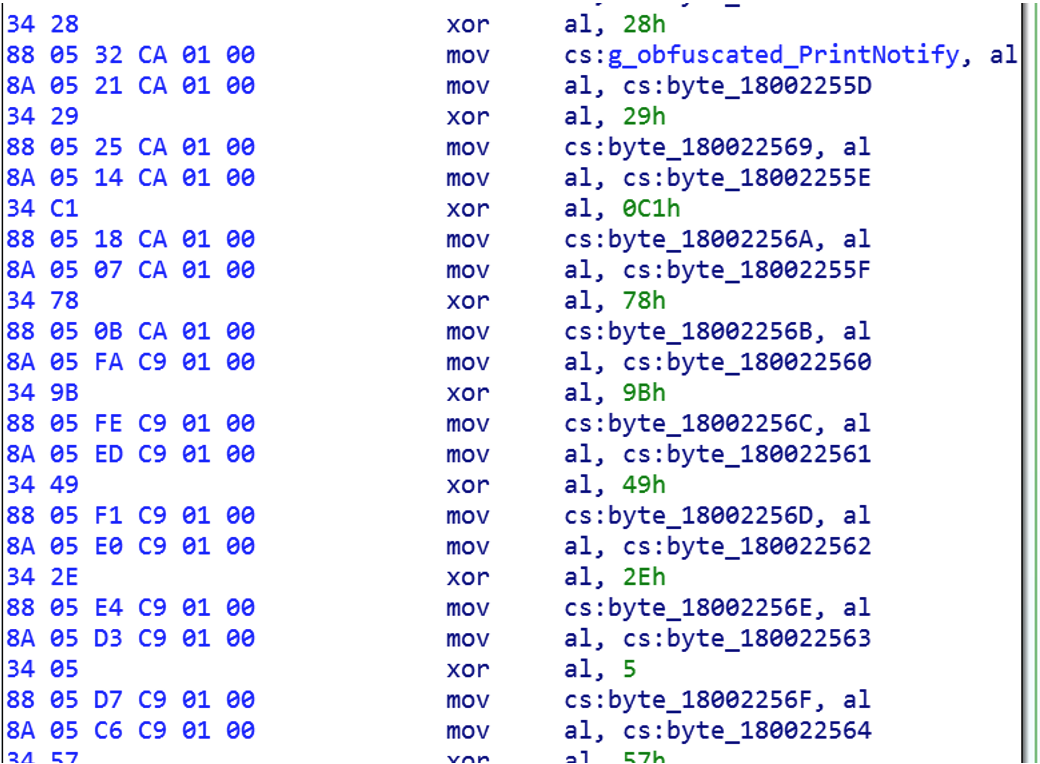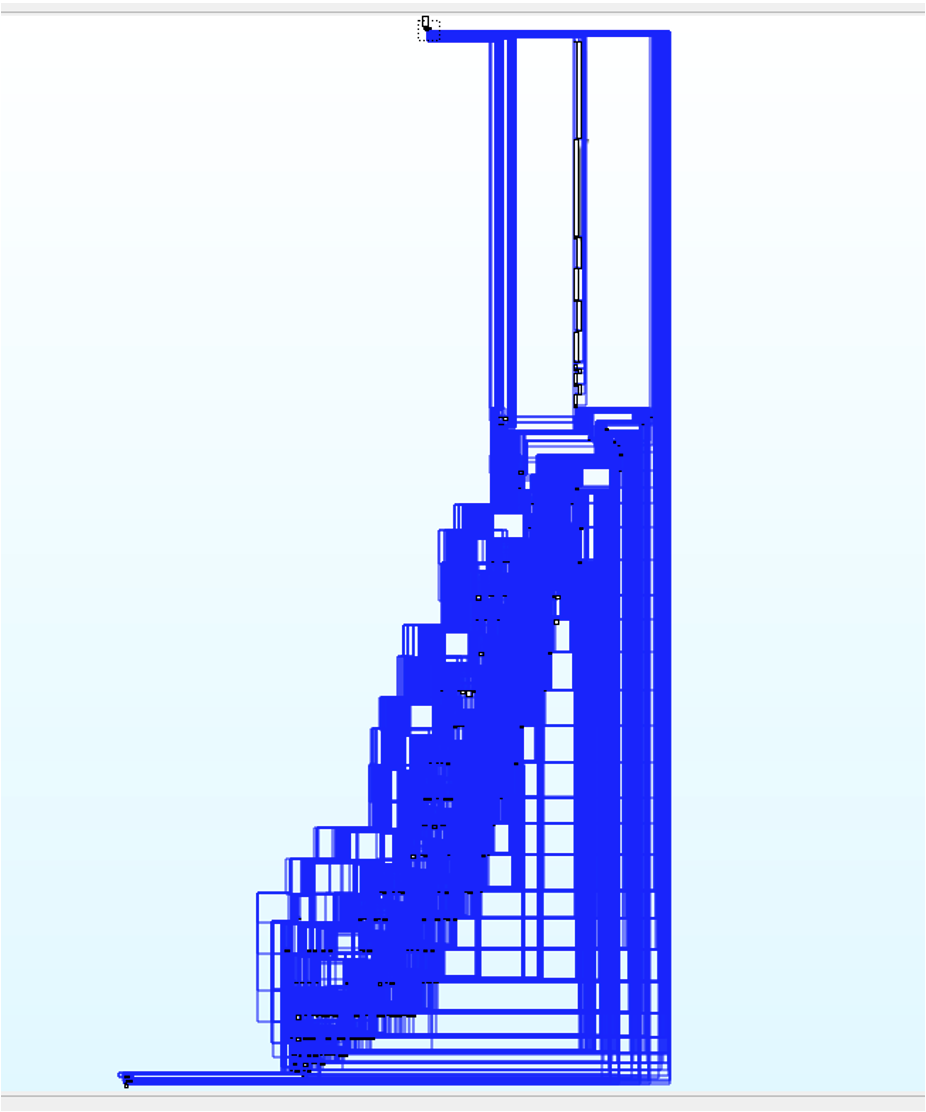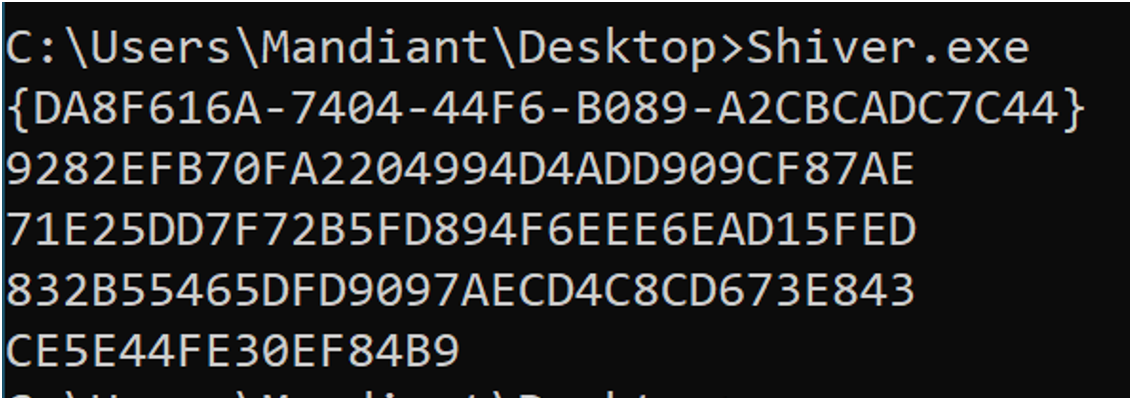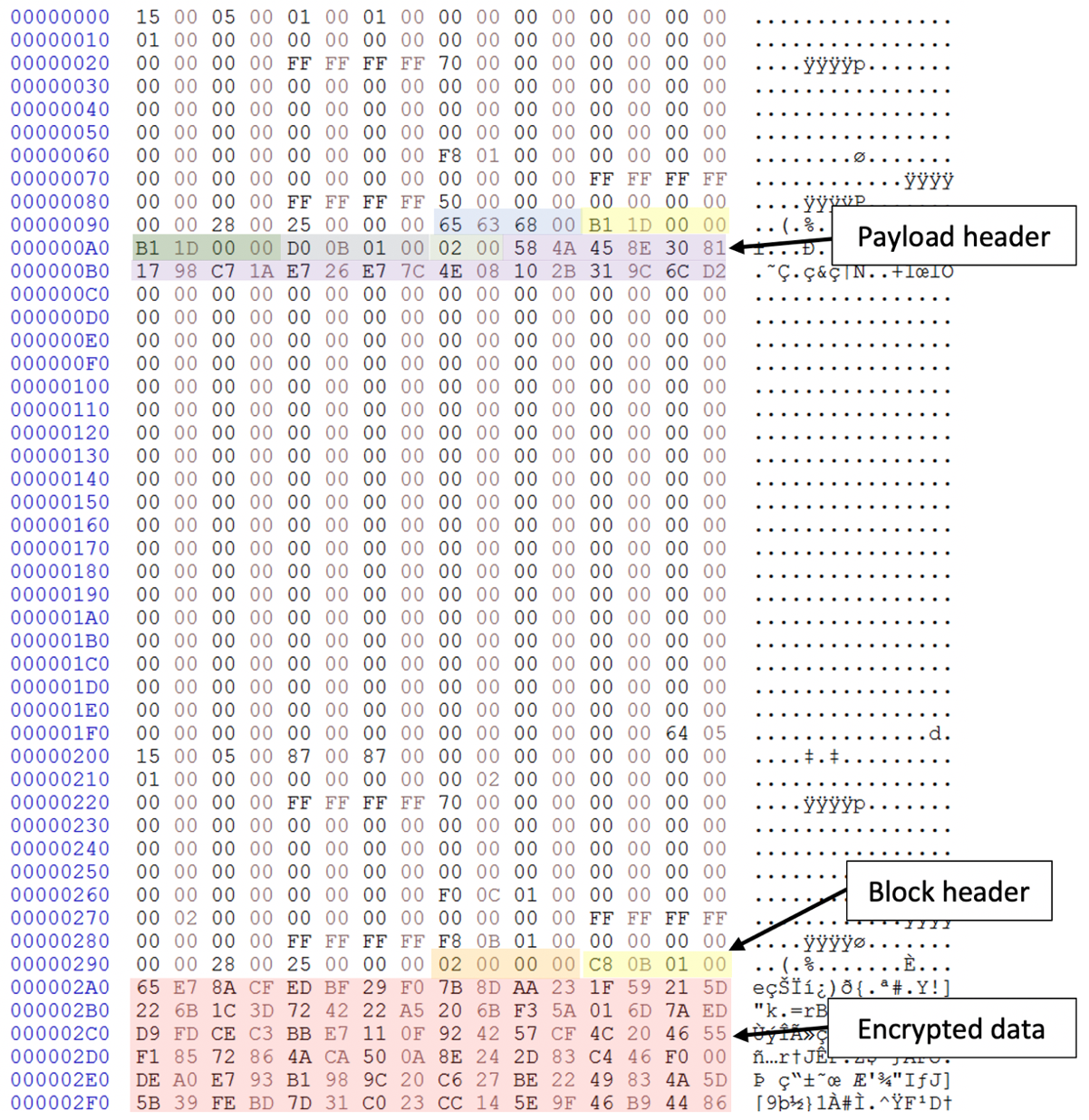Too Log; Didn't Read — Unknown Actor Using CLFS Log Files for Stealth
The Mandiant Advanced Practices team recently discovered a new malware family we have named PRIVATELOG and its installer, STASHLOG. In this post, we will share a novel and especially interesting technique the samples use to hide data, along with detailed analysis of both files that was performed with the support of FLARE analysts. We will also share sample detection rules, and hunting recommendations to find similar activity in your environment.
Mandiant has yet to observe PRIVATELOG or STASHLOG in any customer environments or to recover any second-stage payloads launched by PRIVATELOG. This may indicate malware that is still in development, the work of a researcher, or targeted activity.
CLFS and Transaction Files
PRIVATELOG and STASHLOG rely on the Common Log File System (CLFS) to hide a second stage payload in registry transaction files.
CLFS is a log framework that was introduced by Microsoft in Windows Vista and Windows Server 2003 R2 for high performance. It provides applications with API functions—available in clfsw32.dll—to create, store and read log data.
Because the file format is not widely used or documented, there are no available tools that can parse CLFS log files. This provides attackers with an opportunity to hide their data as log records in a convenient way, because these are accessible through API functions. This is similar in nature to malware which may rely, for example, on the Windows Registry or NTFS Extended Attributes to hide their data, which also provide locations to store and retrieve binary data with the Windows API.
In Microsoft Windows, CLFS is notably used by the Kernel Transaction Manager (KTM) for both Transactional NTFS (TxF) and Transactional Registry (TxR) operations. These allow applications to perform a number of changes on the filesystem or registry, all grouped in a single transaction that can be committed or rolled back. For example, to open a registry key in a transaction, the functions RegCreateKeyTransacted(), RegOpenKeyTransacted(), and RegDeleteKeyTransacted() are available.
Registry transactions are stored in dedicated files with the following naming scheme: <hive><GUID>.TMContainer<number>.regtrans-ms or <hive><GUID>.TxR.<number>.regtrans-ms. These are CLFS containers that are referenced in a master .blf file that only contains metadata and can be found in various locations including user profile directories.
Registry transaction forensics were briefly explored in a previous blog post. The CLFS master and container file formats are mostly undocumented; however, previous research is available on GitHub.
Malware Obfuscation
As with many malware families, most of the strings used by PRIVATELOG and STASHLOG are obfuscated. Yet the technique observed here is uncommon and relies on XOR’ing each byte with a hard-coded byte inline, with no loops. Effectively, each string is therefore encrypted with a unique byte stream.

Interestingly, some of the deobfuscated strings from the installer are used for logging error messages and have spelling errors or typos such as:
- Log index=%d, data border exceed bounday.\n
- Interal data hash mismatch.\n
- Log buffer size=%u too small, expect aleast %u bytes.\n
Introducing STASHLOG
In addition to containing obfuscated strings, the installer’s code is protected using various control flow obfuscation techniques that make static analysis cumbersome. Figure 2 is a graph overview of the installer’s main() function demonstrating the effects of the control flow obfuscation.

STASHLOG has two different modes of operation:
- Without any arguments, during which it will prepare the environment
- With a single argument, which is a file that should be hidden in a CLFS file
Preparing the Environment
Executed without arguments, the installer prints two values to the console:
- The GUID returned from the registry value of HKLM\SOFTWARE\Microsoft\Cryptography\MachineGUID
- A 56-byte value derived from a randomly generated GUID with CoCreateGUID()

The 56-byte value is a concatenation of the random GUID, its SHA1 hash, and the SHA1 hash of the previous values. So: GUID+sha1(GUID)+sha1(GUID+sha1(GUID)).
The randomly generated GUID is stored as a string in the GlobalAtom table, prefixed with win::. This table resides in memory and contains strings with their identifiers available to all applications.
If a string prefixed with win:: already exists when the installer is executed, then the pre-existing GUID in the GlobalAtom table is reused.
Effectively, when executed with no arguments, the installer generates and prints out encryption keys that the actor uses to pre-encrypt the payload before it is written to disk.
Stashing the Payload
When launched with an argument, the installer opens and decrypts the contents of the file passed as an argument. It verifies that the file is suffixed by its SHA1 hash, and then generates the same 56-byte value using the stored GlobalAtom GUID string in memory.
The 56-byte value is SHA1 hashed again and the first 16-bytes form the initialization vector (IV), while the key is the 16-byte MachineGUID value from the host’s registry. The encryption algorithm is HC-128, which is rarely seen used in malware.
The expected decrypted file contents have a 40-byte header:
| struct payloadHeader { DWORD magic; DWORD minWinVer; DWORD maxWinVer; DWORD totalSize; WORD numBlocks; WORD unknown; BYTE sha1sum[20]; } |
In the analyzed installer, the “magic” value is referred to as a checksum; however, STASHLOG verifies this value matches the hard-coded value 0x00686365. The number of blocks, specified at offset 16, must be between 2 and 5. The malware also checks that the operating system version is within a lower and upper boundary and that the SHA1 hash of the decrypted data matches the payload header value at offset 20.
Following the payload header, the malware expects blocks of encrypted data with 8-byte headers. Each block header has the following structure:
| struct blockHeader { DWORD magic; DWORD blockSize; } |
Once the malware has checked and validated the structure of the payload, it searches for .blf files in the default user’s profile directory and uses the .blf file with the oldest creation date timestamp.
In practice, the malware should typically find the file used for registry transaction logs: C:\Users\Default\NTUSER.DAT<GUID>.TM.blf
If a matching .blf file is indeed found, it is opened with the CreateLogFile() API from clfsw32.dll. This function opens CLFS logs and expects a file name in the following format, without the .blf extension: log:<LogName>[::<LogStreamName>]
The log file is reset using the CloseAndResetLogFile() function and will be opened again to insert the data.
Before inserting data into the CLFS log file, the malware decrypts each block using HC-128. The key is the 16-byte atom GUID and the IV is the first 16-bytes of the atom GUID SHA1 hash. Each block is then re-encrypted with the new key material as follows:
- The encryption key is the 16-byte GUID from GetVolumeNameForVolumeMountPointW().
- The IV is the first 16-bytes of the SHA1 hash of the concatenated GUIDs from:
- GetVolumeNameForVolumeMountPointW()
- The registry value HKLM\SOFTWARE\Microsoft\Cryptography\MachineGUID
The contents are written to the CLFS log file using the clfsw32.dll API function ReserveAndAppendLog(). The payload header is written to the log file as the first entry, followed by separate entries for each block.
The data is effectively stored in the first container file for the registry transaction log: C:\Users\Default\NTUSER.DAT<GUID>.TMContainer00000000000000000001.regtrans-ms.
Onto PRIVATELOG
The PRIVATELOG sample recovered by Mandiant is an un-obfuscated 64-bit DLL named prntvpt.dll. It contains exports, which mimic those of legitimate prntvpt.dll files, although the exports have no functionality. PRIVATELOG expects to be loaded from PrintConfig.dll, which is the main DLL of a service named PrintNotify, via DLL search order hijacking.
The malicious code is executed at the DLL’s entry point. It starts by verifying the command-line arguments of the process it is running in and expects to be running under svchost.exe -k print. If this matches, the malware resolves the function address for the ServiceMain export function of PrintConfig.dll, which is the service entry point of the service using this command line. This function is patched using Microsoft Detours—a publicly available library used for instrumenting Win32 functions—so that the execution flow appears to happen in the legitimate service DLL.
The patched ServiceMain function is where PRIVATELOG executes most of its functionality.
Similarly to STASHLOG, PRIVATELOG starts by enumerating *.blf files in the default user’s profile directory and uses the .blf file with the oldest creation date timestamp.
If a matching .blf file is found, PRIVATELOG opens it with the clfsw32.dll function CreateLogFile(). The log file is then marshalled and parsed using other functions specific to CLFS, such as CreateLogMarshallingArea(), ReadLogFile() and ReadNextLogFile(). The malware expects to find specific entries which match our analysis of the installer.
PRIVATELOG expects the first log entry to have the following format:
- A size greater than 40 (payload header size)
- A WORD value of 2, 3, 4, or 5 at offset 16 (number of blocks)
If the first entry matches the aforementioned criteria, then subsequent records are read until one has an 8-byte header with the following:
- Its first DWORD must equal 2 (assumed magic value)
- Its second DWORD must be less than the entry’s size minus the header. This value equals the size of the payload which will be decrypted.
Once the expected log entry is found, its contents are decrypted using the HC-128 encryption algorithm. The decryption key and IV are generated using the same unique host properties that were used by STASHLOG.
It is worth noting that PRIVATELOG only decrypts the first matching block and that at least 2 to 5 blocks are expected to be inserted by STASHLOG.
PRIVATELOG finally uses a rarely seen technique to execute the DLL payload, which this time relies on NTFS transactions. The injection process is similar to Phantom DLL hollowing and is described as follows:
- Open a transacted handle to a copied file via the API CreateFileTransactedA()
- In the sample analyzed by Mandiant, the file used for the transaction is a copy of the legitimate binary C:\Windows\System32\dbghelp.dll, which is copied to C:\Windows\system32\WindowsPowerShell\v1.0\dbghelp.dll.
- Overwrite the transacted file with the decrypted payload contents
- Create a section backed by the transacted file with SEC_IMAGE attributes via the API NtCreateSection()
- Map a view of the newly created section
- This implicitly loads the transacted file data to some degree. The PE header is validated, and sections mapped into memory; however, it does not fix section permissions or resolve imports.
- Fix the section permissions
- Resolve the imports in the Import Table
- Execute the payload's entry point
- Find and execute the export function named SvcMain
Hunting for PRIVATELOG
Container Sample
Figure 4 shows a fabricated container file representing a sample expected log file created by STASHLOG and loaded by PRIVATELOG.

YARA Rules
Mandiant created YARA rules to hunt for PRIVATELOG and STASHLOG as well as possible variants based on various methodologies and unique strings that they use. Rules to detect CLFS containers matching PRIVATELOG structures or containing encrypted data are also provided. These rules should be tested thoroughly before they are run in a production environment.
import "math" rule HUNTING_Win_PRIVATELOG_CLFS { meta: condition: // size of data at least 0x28 for first record // payloadHeader.numblocks (payloadHeader at 0x70+uint16(0x70+0x22)) // this is a size, assume it is less than our filesize // confirm malware using 2 different methods |
rule HUNTING_Win_CLFS_Entropy { meta: condition: and for any i in (0 .. (filesize \ 512) - 1) : |
rule HUNTING_Win_PRIVATELOG_1_strict { meta: strings: condition: |
rule HUNTING_Win_PRIVATELOG_2_notstrict { meta: strings: condition: |
rule HUNTING_Win_hijack_prntvpt { meta: condition: |
EDR / SIEM
To complement static hunting with Yara, Mandiant also recommends hunting for similar indicators of compromise in “process”, “imageload” or “filewrite” events of typical EDR logs. These would cover cases where PRIVATELOG may resolve imports dynamically with LoadLibrary() and GetProcAddress(), versus static imports in currently known samples.
Figure 5 identifies key modules loaded by PRIVATELOG that may be used to create hunting queries: ktmw32.dll, dbghelp.dll and clfsw32.dll.

Example hunting queries include:
- Any process writing or loading C:\Windows\System32\WindowsPowerShell\v1.0\dbghelp.dll
- Any process loading both clfsw32.dll and ktmw32.dll
- svchost.exe -k print loading clfsw32.dll or ktmw32.dll
- Any svchost.exe process loading clfsw32.dll
Concerning svchost.exe, although we have observed many cases of other svchost.exe processes loading ktmw32.dll, we have only rarely observed svchost.exe processes loading clfsw32.dll.
File writes to .regtrans-ms or .blf files are fairly common, however stacking the process name and file paths may also provide good results. For example, file writes to the registry transaction file for the default user are likely to be uncommon.
Hashes
PRIVATELOG
Prntvpt.dll:
1e53559e6be1f941df1a1508bba5bb9763aedba23f946294ce5d92646877b40c
STASHLOG
Shiver.exe:
720610b9067c8afe857819a098a44cab24e9da5cf6a086351d01b73714afd397
MITRE ATT&ACK Techniques
| ID | Technique |
| T1012 | Query Registry |
| T1564 | Hide Artifacts |
| T1574 | Hijack Execution Flow |
| T1574.002 | DLL Side-Loading |
| T1055.013 | Process Injection: Process Doppelgänging |
FireEye Product Detections
| Platform(s) | Detection Name |
Network Security Email Security Detection On Demand Malware Analysis File Protect | FE_APT_Loader_Win_PRIVATELOG FE_APT_Installer_Win_STASHLOG |
| HX Security | Generic.mg.0c605276ff21b515 |
